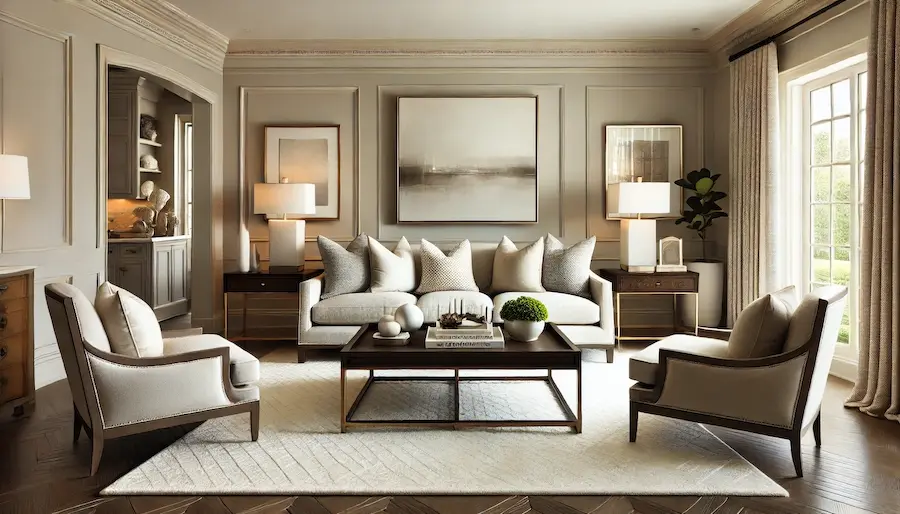A transitional living room seamlessly blends traditional and contemporary design elements, creating a harmonious and timeless space that balances comfort with sophistication.
History and Origins of Transitional Design
Transitional design emerged in the mid-20th century as a response to the desire for interiors that combine the elegance of traditional styles with the simplicity of contemporary aesthetics. This approach integrates classic and modern elements, resulting in spaces that are both refined and approachable.
Key Features of a Transitional Living Room
- Neutral Color Palettes: Transitional living rooms often feature neutral tones such as whites, creams, and grays, providing a serene backdrop that allows furnishings and décor to stand out.
- Mix of Textures: Incorporating a variety of textures—such as plush fabrics, smooth surfaces, and natural materials—adds depth and interest to the space.
- Balanced Furnishings: The style combines curves with straight lines to create a design that balances masculine and feminine attributes, aiming to create a comfortable and relaxing environment.
- Minimal Ornamentation: A lack of excessive decoration keeps the focus on the simplicity and sophistication of the design, with accessories used sparingly to enhance the overall aesthetic.
Applications of Transitional Design in Living Rooms
- Versatile Furniture Placement: The adaptable nature of transitional design allows for flexible furniture arrangements that can accommodate various activities and gatherings.
- Timeless Appeal: By blending traditional and contemporary elements, transitional living rooms maintain a timeless quality that remains stylish across different trends.
- Personal Expression: The neutral backdrop and balanced design provide an ideal canvas for homeowners to incorporate personal touches through art, textiles, and accessories.
Considerations When Designing a Transitional Living Room
- Cohesion: Ensure that the mix of traditional and contemporary elements is harmonious, with a consistent color palette and complementary textures.
- Functionality: Prioritize comfort and practicality in furniture selection, choosing pieces that are both aesthetically pleasing and suitable for everyday use.
- Subtle Accents: Incorporate decorative accents thoughtfully, avoiding overly ornate or minimalistic extremes to maintain the transitional balance.
Conclusion
A transitional living room offers a versatile and enduring design that harmoniously combines the best of traditional and contemporary styles. By focusing on neutral color schemes, balanced furnishings, and thoughtful textures, you can create a space that is both elegant and inviting.
